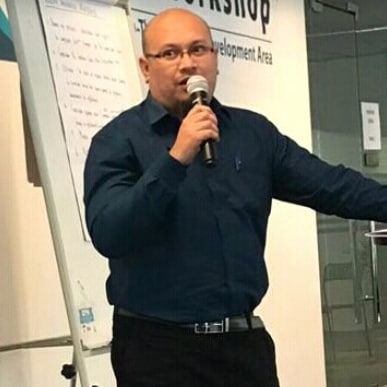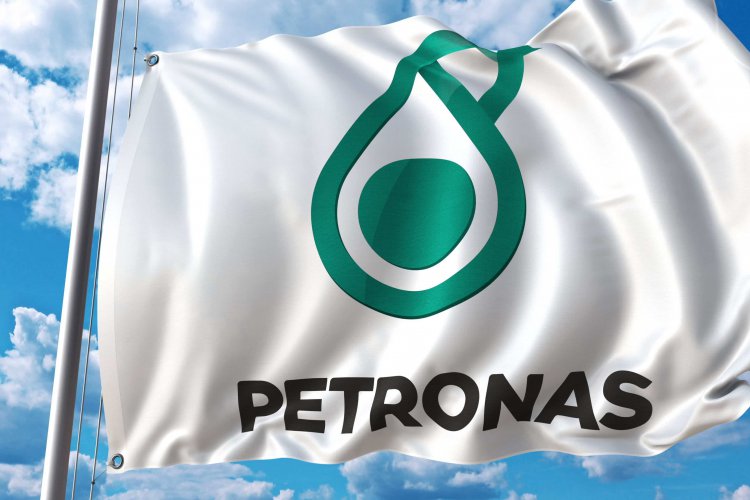A High-Performance Organization (HPO) is an organization that achieves better financial results compared to its competitors over a long period of time, by being able to react and adapt well to changes quickly, by managing for the long term, by setting up an integrated and aligned management structure, by continuously improving its core capabilities, and by truly treating the employees as its main asset. This is important for a company like Petronas to be ready in handling any behavioural or work-related issue in order to maintain its strong position as a Fortune 500 company (at position 158 as of 2019).
Organizational and people capabilities drive performance and enable strategic achievements. As described in a book entitled ‘High-Performance Organizations: The Secrets of Their Success,’ there are fourteen characteristic groupings categorized into five broad dimensions which are Leadership, Design, People, Change Management and Culture & Engagement. However, Petronas achieved HPO-status with their own version called High-Performance Culture (HPC). Petronas compresses the five broad dimension of HPO into HPC which comprises leadership, capability and mindset, which they dubbed as ‘Triple Plus‘.
Leadership
Under the HPC program, Petronas emphasizes leadership by empowering leaders with clear ownership and accountability. There are 2 elements involved: making an effective decision and making a fast decision.
An effective decision can be made if leaders of an HPO apply decisive, action-focused decision-making by avoiding over-analysis but coming up with decisions and effective actions, while at the same time fostering action-taking by others. Effective leadership drives their managers to think strategically, set the pace, allocate resource, build engagement, drive accountability, and deliver results.
A fast decision, on the other hand, requires the design of a lean structure that allows organizations to focus on meaningful work, rather than coordination. On top of that, an HPO stimulates cross-functional and cross-organizational collaboration by making teamwork and collaboration top priorities of management, fostering teamwork by stressing the importance of teams for the performance of the organization, and developing a team feeling by creating team commitment, getting everyone on the same team, and establishing shared responsibility.
In conclusion, a great leader is not only capable of making an effective decision, but they also have to do it fast to ensure their organization does not become left out or lose their market share in an era of fast-moving business climate and globalization.
The other major aspect of good leadership is openness and providing a sufficient channel for communication. A focus on improving the flow of communications within the organization i.e., from leaders to workers and more importantly, vice versa, is credited by many companies as increasing job satisfaction. Petronas is no exception as it encourages a meaningful two-way communication to boost the employees’ job satisfaction and allows for better management of an individual’s career path. Petronas like any other multinational company adopts the concept of town hall meetings, team building workshops, etc. to nourish and provide a platform for open communication between the employees’ and higher management.
Capability
The people’s capability component in HPC is about employee satisfaction which focuses on measuring the degree to which an employee believes it is meaningful to engage in work. This is partially determined by job characteristics and access to sufficient resources to work effectively which include additional training and job enhancement programs.
Petronas empowers their employees’ capabilities by nurturing, harnessing and developing their talents and workforce to deliver a superior collective business result. Once an organization has achieved this state, they can rely on their employees with the right capabilities to provide business savvy and excellent competencies to deliver the maximum possible value outcome.
The more skilled an employee is, the greater the sense of satisfaction that he/she will get from their job, which in turn improves morale and motivation. According to Petronas Vice President of Human Resource Management, Puan Raiha Azni Abd Rahman in her interview with ExpatGo in 2012, she mentioned that Petronas recognize the value of education and capability development to ensure long-term growth and sustainability of workforce.
Once employees have equipped themselves, then it is time for them to move upward in their career ladder. In her presentation during the 31st JCCP International Symposium, she mentioned that Petronas create structured capability development and dual-career options, which are typically the managerial career path and the professional career path. A detailed illustration of the dual-career ladder can be referred to in the following diagram:

BASF Petronas Chemicals (a Petronas subsidiary) in their 2015 annual report mentioned that it provides their employees with the opportunity to grow with the organization. This is reflected in its strategic pillar, Developing Talent for Growth. Therefore the dual-career ladder options enable employees to select their preferred path based on their interests, thus are motivated to continue to deliver optimum output.
Petronas accelerates the development of competent and capable workforce; whilst at the same time provides a clear path for talent to grow. This is evident in Petronas utilizing Advancement and Growth as Motivators as per Herzberg’s Two-Factor Theory.
The Petronas rewards program is another component used to enhance its employee job satisfaction. The introduction of an Employee Performance Management (EPM) system further empowers staff to collectively participate in monitoring, tracking and planning their career growth. It is a performance-based structure of remuneration. The company remunerates employees in accordance with or better than industry standards. In addition, non-monetary benefits include medical and dental, insurance, Haj Leave, education grants, and periodic medical check-ups. These help in keeping the company competitive in hiring and retaining the best talent.
Mindset
Mindset component under HPC is about performance-driven culture and a customer-focused mindset. It is actually is a combination of Change Management and Cultural & Engagement as per HPO definition. Change management focuses more on values of cost, quality, and schedule. Therefore, an HPO must be adoptive, continually detecting changes in the market and making strategic adjustments to ensure survival in the era of globalization.
An HPO company like Petronas establishes clear, strong and meaningful core values and makes sure they are widely shared within the company. This is what we call culture and it is the way things get done in an organization and it reflects in their employees’ behaviour and attitude towards work. An employee is willing to go the extra mile, not because of their job obligation but because it matters to them personally and professionally.
To maintain the right mindset across the company, Petronas has the initiative to identify their Top Talents, a list of their 200 top-tier candidates; these employees possess not only superior technical skills and industry expertise but also outstanding leadership skills. An Internal Employee Potential (EP) Assessment tool was also developed and implemented group-wide to proactively identify employees’ inherent strengths for the strategic development of leaders with a focus on Theory-Y Leadership style that emphasis on employee-centric, human relation, participative and supportive.
Conclusion & Recommendation
To handle a diversified workforce like Petronas, its leaders possess hybrid leadership style that has at least a minimum mix of attributes, such as diplomacy, strategic, transformational, team player, cross-cultural, facilitative, transactional, coaching, charismatic and visionary. These attributes are required in a business organization that is not only cross-generation but also cross-cultural in order to sustain Petronas as a High-Performance Organization.
Autocratic leadership style is a no-no for any HPO as this leadership style dictates everything that their employees must do, which results in creating a work environment that does not foster creativity and innovation. Such work environments will demotivate employees and make them dissatisfied. However, once a decision, target, direction and mission & vision of the company has been set, some level of autocratic foresight is a must to ensure all employee stay on the course.
A strong leader must also avoid the Laissez-faire leadership style, at least not all the time as employees need to be reminded, they need guidance and motivation to ensure that they stick to achieving their key performance indicators (KPIs). Therefore, a leadership style of facilitating and coaching is crucial.
As a conclusion, it takes 2 to tango in order to establish and sustain a High-Performance Organization. If I can summarize HPO in one sentence, it would be ‘happy employees create happy employers and vice versa’. There is no company that can focus on just one side of the equation and become successful in the long run.
Disclaimer: All materials used as references for this article are either publicly available on the internet or from textbooks. There is no P&C document being used.
References:
- BASF Petronas, 2015. BASF Petronas Chemicals Report, Shah Alam: BASF Petronas Chemicals Sdn Bhd.
- Bhalla, V. et al., 2011. High-Performance Organizations: The Secrets of Their Success. Boston: The Boston Consulting Group.
- Cummings, T. G. & Worley, C. G., 2008. Organization Development & Change. 9th ed. Ohio: South-Western Cengage Learning.
- ExpatGo, 2012. Petronas; Developing Workforce for Successful Talent Management. 31 October.
- George, J. M. & Jones, G. R., 2012. Understanding and Managing Organizational Behaviour. 6th ed. New Jersey: Prentice-Hall.
- Leaf, C., O’Keefe, B., Nusca, A. & Heimer, M., 2019. Fortune. [Online]
- Available at: https://fortune.com/company/petronas/global500/ [Accessed 11 Nov 2020].
- Mahalingam, E., 2013. Companies Stand to Gain From High-Quality Employees. The Star Online, 23 February.
- Petronas, 2017. Petronas (Petroliam Nasional Berhad). [Online]
- Available at: http://www.petronas.com.my/sustainability/cs/lt/Pages/WorkforceDevelopment.aspx [Accessed 10 May 2017].
- Rahman, R. A. A., 2013. Building A Sustainable Human Capital Strategy. Tokyo, Petronas.
- Robbins, S. P. & Judge, T. A., 2013. Organizational Behavior. 15th Edition ed. New Jersey: Prentice-Hall.
- Waal, A. d., 2007. The Characteristics of a High-Performance Organization. Business Strategy Series, Volume 8 (Number 3).
















